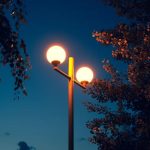Contents
The Concept and History of Night Lighting
Night light have been used for centuries as a means to provide illumination after dark, serving various purposes from warding off the darkness to guiding one’s path during nocturnal hours. The origins of night lights can be traced back to the use of candles and lanterns. With advancements in electricity, night lights have evolved into more convenient and safer forms. They now offer a delicate balance between utility and comfort, providing just enough light to navigate through darkness without overwhelming the senses. The evolution of night lights has made them an integral part of home comfort and safety, evolving with technology to meet modern needs.
The Multifaceted Uses of Night Lights
Today, night lights are no longer just tools for navigation in the dark. They have become multifaceted devices serving a range of purposes. For parents, night lights are an essential element in the nursery, offering a gentle glow to soothe infants and provide enough illumination for nighttime care. For the elderly, they are a safety feature, reducing the risk of trips and falls. Night lights also serve as ambiance creators, contributing to a calm and restful atmosphere conducive to sleep. The versatility of night lights makes them valuable in diverse settings, from residential to commercial spaces.

Psychological Comfort Provided by Night Lights
Night lights tap into the primal human instinct for safety and assurance that comes from light. They provide psychological comfort, often helping alleviate the fear of the dark in both children and adults. The soft luminance of a night light can fend off the unease and anxiety associated with complete darkness, allowing for a more serene and restful night’s sleep. This comfort is not just for the individual directly using the night light; it extends to caregivers who take solace in knowing that their loved ones can navigate safely if they need to get up in the night.
Innovations in Night Light Technology
Advances in Bulb and Light Source Technology
The technology behind night lights has seen significant improvements over the years. Traditional incandescent bulbs have largely been replaced by LED light technology, which offers a myriad of advantages, including energy efficiency, longer lifespans, and the ability to manipulate colors and intensity. These innovations have allowed night lights to become customizable, catering to individual preferences and needs. Additionally, advancements in solar-rechargeable and motion-sensing night lights have enhanced convenience, allowing them to be used in areas without easy access to electrical outlets.

Smart Night Lights and Connectivity
The integration of smart technology into night lights has been a game-changer. Wi-Fi-connected night lights that can be controlled via smartphone apps or voice commands have become increasingly popular. They offer users the ability to adjust brightness, set schedules, and even change colors, all from the convenience of their bed or from a remote location. This connectivity has not only provided a greater level of control but also opens up possibilities for integration into larger smart home systems, where night lights can respond to other stimuli, such as alarms or environmental changes.
The Design Aesthetic and Personalization of Night Lights
Modern night lights are no longer just functional devices; they have become pieces of design and personal expression. Designers are creating night lights in various shapes, sizes, and themes to complement different decor styles and personal tastes. These designs range from sleek, modern fixtures to whimsical shapes that delight children. The ability to personalize night lights, whether through interchangeable faceplates or adjustable settings, means they can not only serve a practical purpose but also act as a design element that enhances the ambiance of a room.

The Future of Night Lighting
Trends in Eco-Friendly and Sustainable Night Lights
Moreover, As environmental awareness increases, the demand for eco-friendly and sustainable night lights is growing. Manufacturers are responding by creating night lights using recycled materials, biodegradable components, and energy-saving technologies. There is a push towards creating products that have a minimal environmental impact throughout their lifecycle, from production to disposal. This shift is leading to innovations in both materials and manufacturing processes, aiming to provide consumers with greener choices in their quest for nighttime illumination.
The Integration of Health and Wellness Features
The next wave of room light technology is likely to incorporate features that promote health and wellness. Night lights with built-in air purifiers, aromatherapy diffusers, and soundscape generators are already making their way into the market. These multifunctional devices cater to a holistic approach to sleep and relaxation, addressing other factors such as air quality and mental well-being. Future night lights may even incorporate biofeedback technology to enhance sleep quality or wakefulness, adapting their output to the sleeper’s circadian rhythms.

The Integration of Health and Wellness Features
Night Lights and Sleep Quality
As we become more attuned to the needs of a good night’s sleep. Night lights are being engineered with features to promote restfulness. Sleep scientists and lighting designers are collaborating to create lights that can shift in color temperature—moving from colder, blue-enriched light to a warmer, reddish hue as bedtime approaches. This transition aligns with the body’s natural circadian rhythms, encouraging the production of melatonin, the sleep hormone. Future night lights may even sync with personal wearable devices to personalize the light based on individual sleep patterns. Providing an optimized sleep environment.
The Calming Effects of Night Light Designs
Therefore, Beyond their practical role, night lights are being seen increasingly as part of the broader wellness trend. Designers are creating night lights that serve dual purposes: illuminating dark spaces and providing a source of relaxation. Some options project patterns or natural scenes onto the walls. While others can emit a gentle glow that mimics the natural light of a sunrise or sunset. Features such as adjustable brightness, hue settings. And integrated soundscapes can transform a bedroom into a haven of tranquility, assisting with de-stressing and mindfulness practices before sleep.

Night Lights as Health Monitors
Looking forward, the potential for night lights as health monitors presents an exciting frontier. Imagine a night light equipped with sensors that can track sleep disturbances or monitor breathing patterns. Alerting users to potential sleep apnea episodes. Innovations might include integrating air quality sensors to ensure the bedroom environment is conducive to health, automatically purifying the air or adjusting humidity levels. As smart technology progresses, night lights could provide more than comfort—they could become guardians of our well-being at night.


